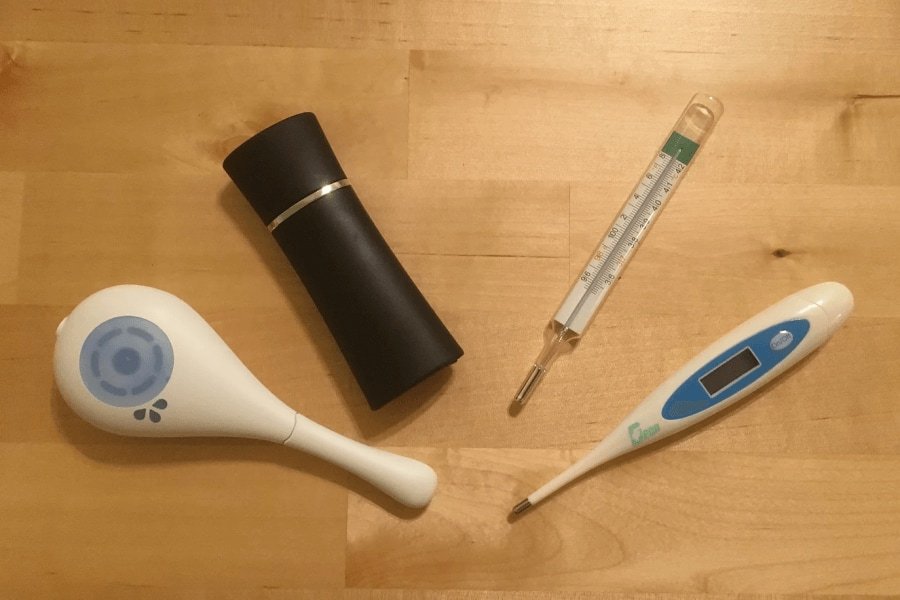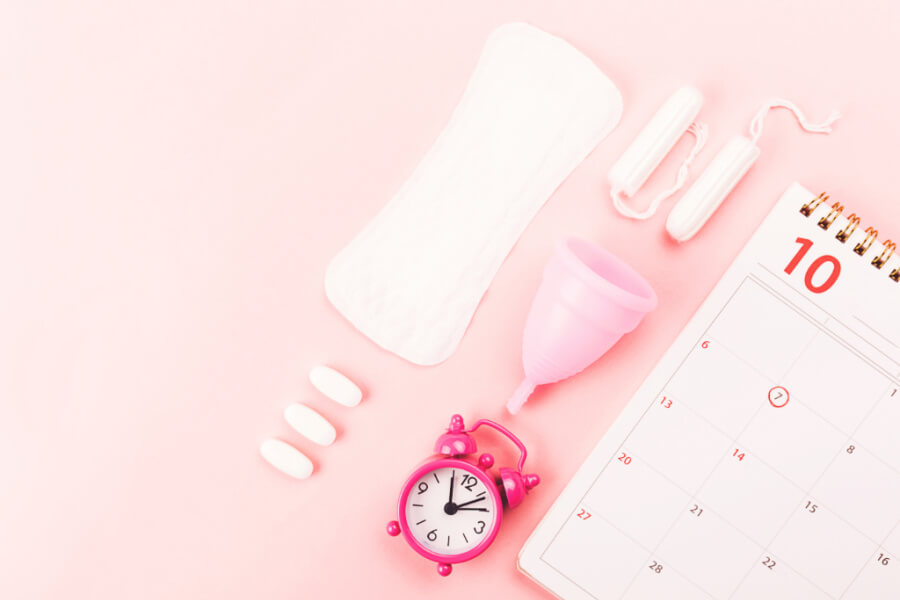One of the things many of my clients do every morning is chart their basal body temperature (BBT) because charting your cycle can give me huge clues to your hormonal health. BBT charting can be used on its own or as part of one of the Sympto-Thermal Methods (STM) of either Natural Family Planning (NFP) or Fertility Awareness Method (FAM).
If these terms are new to you, these methods are used to achieve or avoid pregnancy using evidence based, scientifically proven methods of measuring various bodily signs and symptoms, doing various calculations and using this to determine whether or not you are fertile. It also has the added bonus of giving trained practitioners such as myself a HUGE insight into your health and hormones.
However, there are a number of things to bear in mind when taking temperature to ensure you are optimising your BBT recording.
1. Research Before Buying Your BBT Thermometer or Device
This is the number once mistake most of my clients make to begin with. They discover charting, get really excited, buy a thermometer and then discover they bought the wrong one. There are many thermometers out there with pros and cons to each. There are so many recommendations, however, there are several things to take into consideration:
Budget – if you are just starting out and not sure if you will keep up the method, then you may want to go for the cheaper end of the market. Once you get more confident and have bought into the process, you can look at the more expensive devices. The cheapest thermometers you can get for £3 but you can spend hundreds of pounds to get the high end devices. So be clear on what you can spend to start with whilst you are learning. You can always upgrade later once you have decided temperature charting is for you.
Scale – are you charting in Fahrenheit or Celsius/Centrigrade? Some thermometers will only give you one scale, so ensure you get the right one.
Number of decimal places – if you are charting in Celsius/Centigrade, you must chart to 2 decimal places, however, with Fahrenheit, you can use devices that chart to 1 decimal place which opens up the range of choices more.
Noise – some thermometers are silent (but you can’t tell in the morning light whether they have taken your temperature or not), others may beep or vibrate. I can tell you from experience, that there is a huge difference between different thermometers. Some have a really discrete quiet beep that my partner sleeps through, others are very loud. Some vibrate, but actually, the vibration noise is louder than the beeping in some cases.
Lighting – this depends on the time you get up and the time of year. If you are getting up in the dark, do you need to see the display to read the temperature? Some are back-lit but others will either save the temperature until later or send it to your phone so you can plot it onto your chart later.
App enabled – do you want one that syncs to an app such as the Kindara Wink syncing up to Kindara. These tend to be more expensive and probably not necessary until you have decided charting words for you.

2. Practice Using Your Thermometer or Device in Advance
This may sound silly but whatever thermometer you use, glass or digital, they are all different and take different times to take your temperature and let you know the temperature has been successfully taken in different ways. Ensure you are familiar with how long yours takes to read the temperature and what sign it gives to let you know that it has. Some beep, some flash and some vibrate. They can take between 30 seconds and 5 minutes.
Glass thermometers usually take at least 5 minutes and require you to interpret their temperature reading relatively quickly as once you take it out of your mouth it will drop back to room temperature. So if you use a glass thermometer, you want to make sure you can read it fairly quickly in morning light. Quick tip, some people take a picture and then read it later.
Digital thermometers, will be a lot faster. Some have a backlit display so you can see if you can read it in the dark and others will remember the last temperature or even last 30 temperatures. Some, like Kindara Wink will even sync up to your phone or other mobile device. But make sure you know which before you are scrambling around in the dark (and possibly annoying your partner with beeping and light displays) to know what you are expecting to happen first.

3. Read Your Thermometer or Device’s Instructions Carefully At Least Twice
Some devices have very particular instructions and may need extra items to work properly, or certain preparation such as glass thermometers often need to be shaken out. If that is the case, often you can do that the night before so as not to raise your temperature in the morning before you get the chance to take it.
Some devices do not need you to take your temperature immediately on waking but it is best practice to do so.
4. Be Consistent With Your Charting
There are several ways to take your temperature, oral/sub-lingual (which is under the tongue), vaginally (in the vagina), anally (up the anus), axillary (under the arm) or timpanically (in the ear).
Whichever method you use, you should ensure you use the same location each time to get a consistent temperature pattern. If you wish to change, wait until day 1 of the next month.
Just a note, whilst timpanic temperature is accurate, you will get around a 0.2 degrees Celsius difference between each ear, so you must use the same ear each time. Also, axillary temperature is not very accurate, usually as it is difficult to get the same place each time and to keep the thermometer still.

5. Get Into the Groove of Charting
We all have different shaped bodies and that includes all the possible cavities we use to measure our temperature. You need to learn to get the thermometer into the right place. If for example, you are doing the sub-lingual oral temperature, you need to get the end of the thermometer under your tongue pressed into the fleshy pocket on either side of your frenulum (that line of skin in the middle of the underside of your tongue), and cover it with your tongue.
Close your mouth to form a temperature seal between the temperature in your mouth and outside your mouth. Also, bite lightly on the device to keep it in place (not too hard, especially with a glass thermometer as you don’t want to break it).
Keep the thermometer as still as possible as this can interfere with the reading, even swallowing can cause extra movement. Once you get the place right, you will know your BBT groove and slip your thermometer in without much thought.

6. Understand Your Basal Body Temperature (BBT)
Your Basal Body Temperature is the lowest temperature at which your body operates and is the most consistent way of getting a comparable temperature reading every day. You need ideally 4 hours sleep (minimum 3 hours), before you take your temperature. Once you have started waking, your body starts to increase its metabolic processes to provide energy for your body to move. This means you will heat up as a result. Therefore, the best time to take your temperature is as soon as you wake up, often when half asleep, so keep your thermometer next to the bed.
Shift workers, this is a bit more complicated, but as long as you have at least 3 hours sleep before taking your temperature, you should be able to get a BBT reading.
Do you consistently wake up an hour earlier than your alarm in the morning? If so, that is the time to take your temperature, as long as you have had the minimal 3 hours rest.
7. Learn Your Adjustments & Disturbances
The only adjustments you can make is if you wake up early or late. If you have consumed alcohol, travelled, are ill on medication or have any of the other disturbances, still take you temperature, but mark in the disturbance. This will remind you that you had a disturbed temperature that day rather than miss out that day on your chart.
If you aren’t sure on how to adjust for taking your temperature at different times, then just focus on taking the temperature and noting the time you took it, if it different to the normal time. It is relatively easy to learn how to adjust, but to know by how much, you need both the temperature and the time taken.

8. Are You Getting Crazy Temperatures?
You probably know about the possible disturbances, however, if you know you don’t have a reason for some very inconsistent temperatures e.g. you have taken it at the same time every day, have not consumed alcohol, are well and not on any medications, then it is time to look at your thermometer.
Often when a thermometer needs recharging or a new battery, you will get some very bizarre temperature fluctuations. So keep an eye out for that. Bear in mind, if you change thermometer mid cycle, you lose your reference temperature range so you may have to wait for the next cycle before you allow for infertile days.
9. Don’t Crowd Source Interpretations for Your Chart
There is so much information on the internet right now, so many ways of connecting with people and ways of sharing your chart. However, I see so many Facebook groups in which people are given inaccurate information, or information inconsistent with the method they are learning, and sometimes people don’t even know when method they are learning, you could end up with very conflicting advice or even incorrect advice.
Stick to one course, book or teacher to start with until you are solid in your technique.

10. Stick to ONE Method
There are actually a number of Sympto-Thermal Methods that have slightly different rules. Whether you want to learn NFP, FAM, Sympto-Pro, Sensiplan or any other method, it is important you consistently learn and use that method so that you have a good grasp of your method and how it works. Generally, once you have mastered one method, you can see how the others work and the variances between them, but for now, keep it consistent or you can end up confused and at worst, making a life altering error.
Summary
There are a number of things to bear in mind when you start temping, but it is worth bearing in mind that when you start, the important thing is to get into the habit of temping rather than worry about interpreting the chart straight away.
Once you get consistent temperatures, the motivation to interpret them will come anyway.



